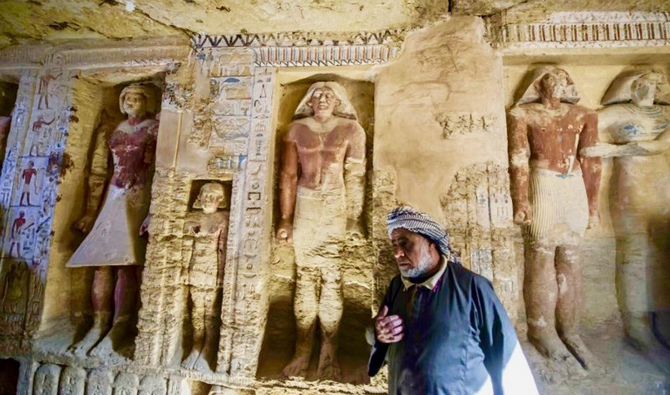I dont know how many people keep up with archaeological discoveries but On October 3rd, Arab News printed an article titled ‘Egyptian Archaeologists unveil discovery of 59 sealed sarcophagi’. According to Arab News, archaeologists discovered the 59 sealed sarcophagi at Saqqara, outside of Cairo. The mummified remains can be dated back almost 2,500 years and egyptologists expect to find many more.


Saqqara gains its importance for its close proximity to Memphis, the first capital of Egypt. Small square tombs were built by the kings of the first and second dynasties with the step pyramid built by the first king of the Third dynasty, Djoser. Kings of the fifth and sixth dynasties also built pyramids and tombs for their high officials. In 2008, the tomb of Wahyte, a high ranking priest and official of the King Neferirkare Kakai. from the Old Kingdom’s fifth dynasty.

What is interesting is that the 59 seal sarcophagi have been found near otther important officials including the ambassador of Rameses III, the nanny of the boy king Tutankhamen and the prime minister of the pharoah Amenhotep III (ruled from 1386 B.C to 1349 B.C). Saqqara continued to be used as a cemetary for the important high ranking officials of pharoahs for at least 3,000 years.
The discovery of 27 sarcophagi in Saqqara which dates back to 500 B.C, the time of the Persian control over Egypt until 404 B.C. Could the sarcophagi be evidence that the ruling Persians continued traditional Egyptian practices than enforced their own customs on Egypt? Or could the sarcophagi be from the period of 404 B.C when Egypt was ruled by the Pharoah Amyrtaios II of the 28th Dynasty and by the pharoahs of the 29th Dynasty that ruled from 399 B.C until 380 B.C. Egypt continued to hold off the Persian attacks under the pharoahs Nectanebo I and Nectanebo II of the 30th Dynasty until Egypt fell to Alexander the Great of Macedon in 332 B.C.
Continued discoveries of undisturbed sarcophagi in Saqqara will continue to show that Saqqara was still used as a burial place for not only the earlier pharoahs and those of the new kingdom, but the pharaohs of the late period of Ancient Egypt and maybe even provide tombs dating back to the reign of Alexander the Great and the Ptolemies.